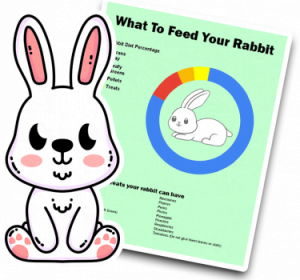
Some pets need help bathing while some do not. Rabbits, along with cats, fall into the category of independent bathers. There are still safe ways to bathe your pet rabbit if necessary, but be aware of the risks.
Avoid bathing your rabbit and only do so as a last resort. If you must bathe your rabbit, proceed with extreme care and caution.
Health Risks of bathing your rabbit:
Rabbits do a pretty good job at keeping themselves clean. However, suddenly being shoved into a body of water is a horrifying and unnatural experience for your pet rabbit.
A stressed rabbit may injure him/herself and go into shock. If your rabbit does not go into shock, he/she is still at risk for hypothermia, infection and rashes due to dry skin. Some of these risks, especially hypothermia, can lead to death.
However, sometimes washing your rabbit is absolutely necessary. In times where your fuzzy companion must be bathed, it is best to spot clean or give dry baths. Even if your little friend happens to be covered in fleas, spot cleaning or dry baths are the best ways to go
Spot cleaning is the first option you want to consider when it comes to bathing your messy rabbit. Take a dry towel and try wiping off the areas you want to address.
If that is not enough, you can dampen your towel just a little bit. Make sure the damp towel is not dripping wet before you attempt to wipe off any dirt or grime again. Be gentle with the process and always thoroughly dry your buddy’s fur afterwards.
Most rabbits will not be okay with this, most of which will struggle and fight but if your rabbit needs to be cleaned and is struggling to do so themselves it’s something you both need to learn to be okay with.
If your rabbit is much too dirty for spot cleaning, you can try dry bathing. All you need is a cornstarch, a comb, and a towel. Ideally you want to bathe your rabbit in the bathroom for an easier clean-up once its finished.
Cornstarch is particularly good for a disabled rabbit who needs assistance, just make sure to clean everything up fully.
Wet bathing may be your last resort if you’ve exhausted all options and your rabbit is still a muddy mess. When it comes to wet bathing you can not bathe your rabbit alone.
Someone will need to hold your pet still while you clean, otherwise your rabbit can be seriously injured when he/she attempts to escape the bath. To ease your rabbit’s stress, place a towel or mat beneath him/her feat to make it a more comfortable experience.
Never allow your rabbit to be submerged in water. Only use warm water and bathe in a place where the water can be drained, such as a sink or a bathtub.
Pour the water gently onto the target areas of your rabbit at a steady pace. Do not use cold water or a shower head for it can make your rabbit sick and/or cause your rabbit to panic.
When bathing, start at the tail and work your way up. Stop before the head! Getting water in your rabbit’s eyes or ears can cause serious damage. How to wash the head and ears will be explained at the end of this section.
If you wish to use rabbit shampoo, be sure it is thoroughly rinsed off. Rabbits will groom themselves after a bath and licking any trace of shampoo can make them ill. We suggest avoiding rabbit shampoos and leaving that to your veterinarian.
To avoid getting your rabbit cold and sick, quickly go through this bathing process and dry them as soon as possible.
Wet coats put rabbits in a delicate position and can cause the skin to be extra fragile as well. When drying your rabbit practice extreme caution for their skin can tear easily.
It’s not recommended to use a hair dryer to dry your rabbit as it can overheat your rabbit. If it’s a must, to prevent overheating, use a less than hot setting and do not focus on one area too long. Keep the hair dryer usage short and sweet.
Once the bathing is complete, keep your rabbit indoors overnight to reduce the risks of hypothermia.
The head and ears should be washed separately with moist washcloths. The washcloth should be neither hot or cold, only warm.
If you want to create a deeper bond and keep your rabbit clean, you can do that by regularly grooming him/her. Rabbits also groom one another as a sign of compassion so it’s usually a comforting experience for them. It also happens to be a good opportunity to spot any health risks before they get serious.
You can spot health risks by:
“Poopy butt”, most commonly occurs in obese, elderly or disabled rabbits. This is most often the reason why you might want to bathe your rabbit. These types rabbits usually need a little help cleaning poop that clump up on their bum. Poopy butt can be very uncomfortable for your rabbit and stinky for you!
To clean poopy butt use the same process mentioned in wet bathing or dry bathing, but focus your attention on the target area only:
In order to prevent regular bathing that will constantly put your rabbit’s health at risk, routinely spot clean instead.

By entering your email address you agree to receive emails from Cottontailclub. We'll respect your privacy and you can unsubscribe at any time.